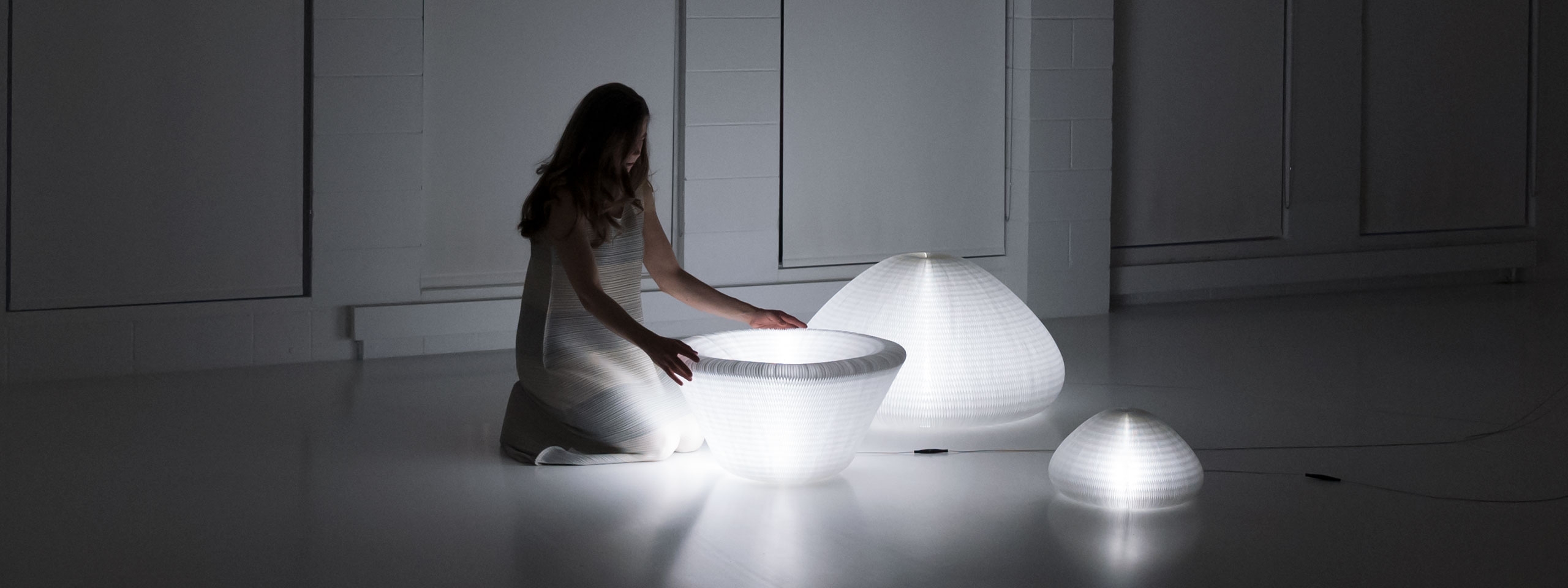
by Stephanie Forsythe and Todd MacAllen
At molo, we see light as a material, like wood or paper. Though you can’t touch it, it is equally present and a living part of a design experience. When light and design are in dialogue, these elements have an unparalleled capacity to sculpt space in a way that moves our emotions.
Light and shadow are unifying forces that shape not just what we see, but how we live and feel in any given moment. There is an inexplicable magic in observing how a space gradually fills and empties, in relationship with sunlight or the placement of other lighting sources, that fuels our process.
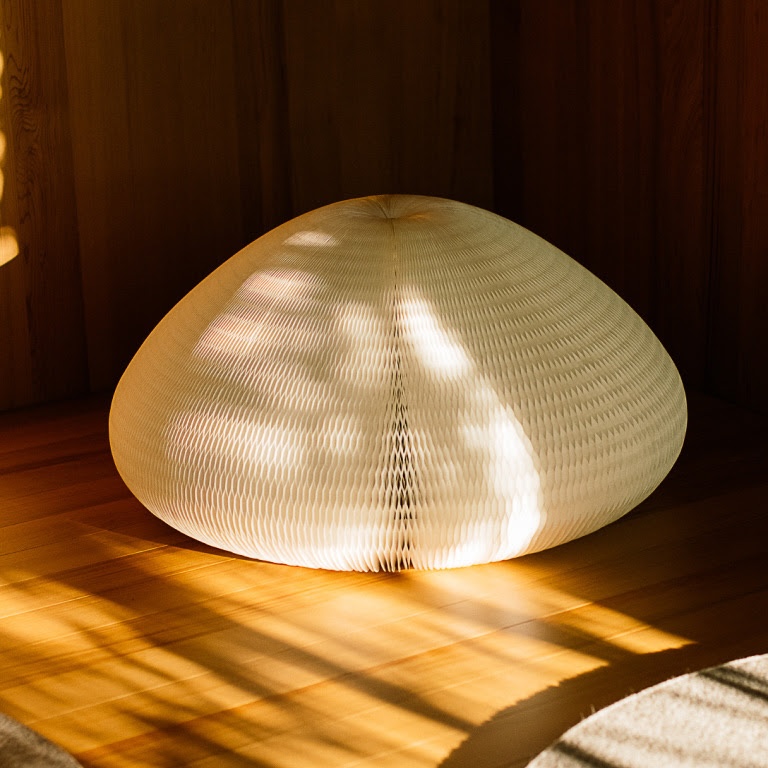
Humans need light as much as plants do. In the realm of architecture and design, we are, therefore, as interested in capturing sunlight as we are in working with light as an object. As a consequence, our lamps and objects are designed to playfully interact with daylight and its absence.
As we move into a darker period of the year, we invite you to consider how light is a precious resource, a mechanism for communal gathering, and a living element of design.
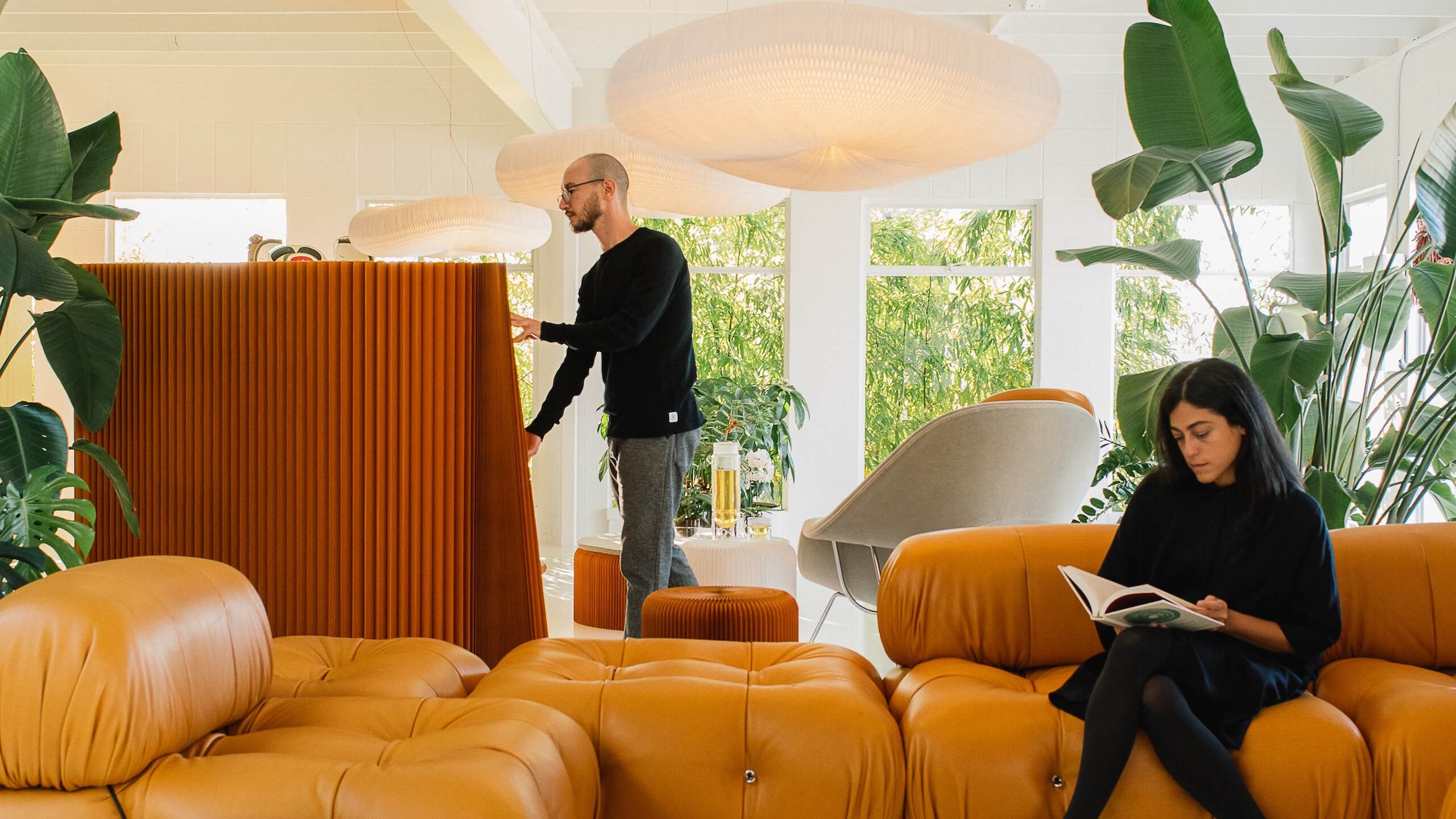 cloud softlight: cloud pendant 2700K lighting. Photo credit, Alana Paterson
cloud softlight: cloud pendant 2700K lighting. Photo credit, Alana Paterson
a poetic material
Light is simultaneously the most poetic and technical of materials. It affects us in a primal way, yet is constantly connected to evolving technology. In our design process, we are empowered by technical advancements to respond poetically, seeing light as an interactive force that affects us and our environments.
In office and home interiors, we focus on creating fixtures that allow the eye to adjust more gradually. Designed to minimize glare as the sun sets and as rooms dim, our lighting confronts the pervasive use of harsh, bright light — a common phenomenon in offices, in particular.
Our cloud softlight pendants and mobiles have the potential to form sculptural interior skyscapes that hold and diffuse light, creating an intimate sense of enclosure to gather under. Before we switch the lights on, we are reminded of how these suspended cloud-like forms aren’t merely objects, but forms that play with light and shadow that fuse together an atmosphere.
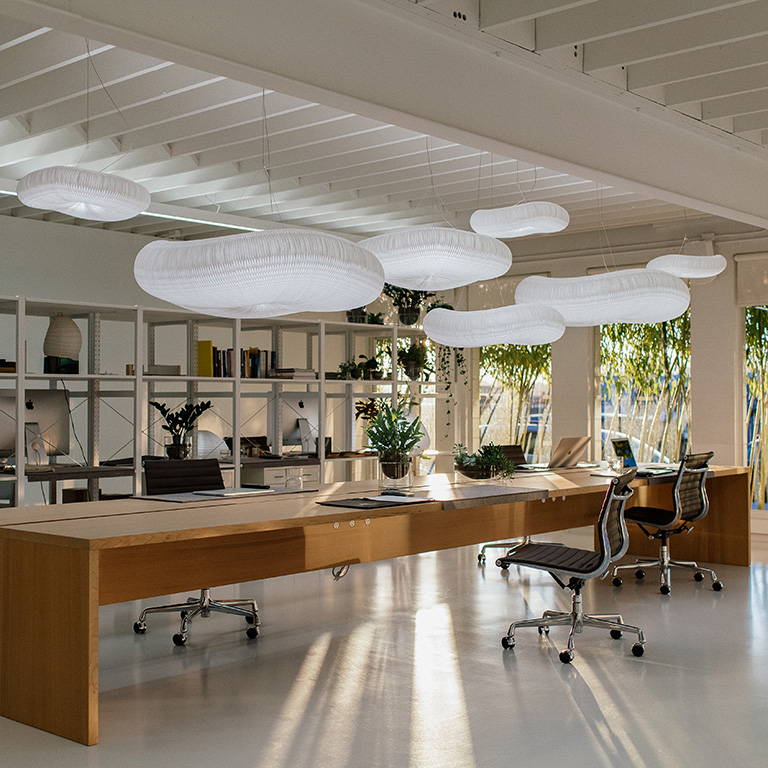 cloud softlight pendants, office lighting, molo studio
cloud softlight pendants, office lighting, molo studio
cultures of shadow + light
We are sensitive to the ways in which light affects us. Research shows that artificial light affects our focus, mood, and sleep-wake cycles. The near-constant flicker of poor lighting (that goes unnoticed consciously — but watch what happens when you pull out your camera) triggers subtle strain on the body and mind.
The objective of bright artificial light is to keep us awake. Sunlight naturally reduces the production of melatonin and increases prior wakefulness — the greater the prior wakefulness, the better your sleep will be. Industrially, the idea behind artificial light is to keep people awake, but as a result, it can disrupt natural cycles and cause sickness.
To mitigate the unwanted effects of artificial lighting, we use LED sources that closely replicate aspects of natural light. In all cloud softlight pendants and lamps, we use energy-efficient +90 CRI LEDs, which render colours and details naturally and vividly. CRI values 90 and above are considered excellent imitators of daylight, making them excellent for workspaces and home offices. We use three colour temperatures for our LEDs, chosen for the way they recreate specific times of day and seasonality. 4000K is a neutral white that matches sunlight at midday. 3000K is a warm, comforting white that mimics the sun as it dips lower in the sky, and 2700K is warmer still, recreating a sense of golden hour.
urchin, cappello and the plug-in versions of cloud softlight all include custom in-line dimmers that allow for soft transitions. All molo light fixtures provide flicker-free lighting, to foster healthy environments for productivity and rest.
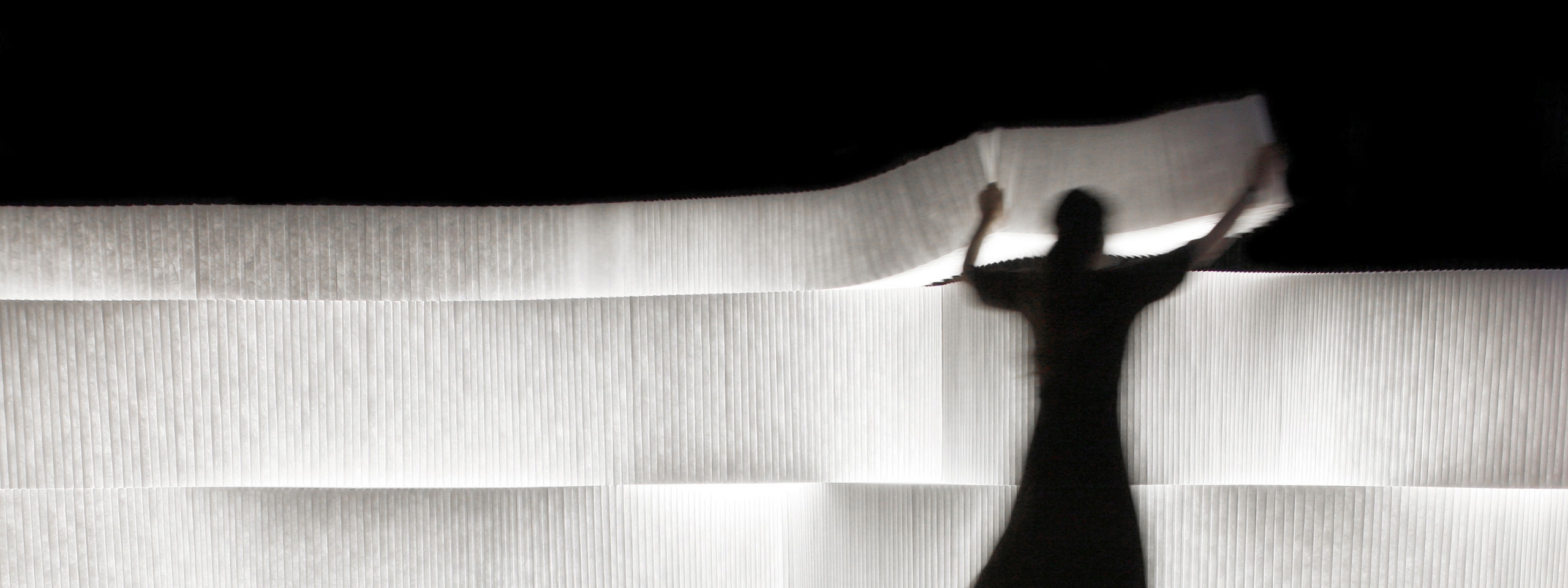
cultures of shadow + light
Inspired by Jun’ichirō Tanizaki’s In Praise of Shadows (1933), we embrace light and shadow as partners in design, cultivating mystery and emotion. Tanizaki’s belief that “were it not for shadows, there would be no beauty” resonates deeply, guiding us to favor subtle, nuanced gradations of light over unrelenting brightness.
Cultures like Japan, Sweden, and Denmark embody this philosophy, using candlelight, hearths, and warm-toned fixtures to embrace light’s ambient nature. Drawing from these cultures, urchin and float tea lantern tap into tactile and transformative qualities of light. float tea lantern turns a glass teapot into an intimate hearth, its glow enhancing the hues of tea, mulled wine or cider. Meanwhile, urchin’s honeycomb geometry diffuses light that shifts with every interaction.
This ethos extends to the illuminated versions of softwall + softblock. The combined use of a paper-like material and LED ribbons concealed within white textile softwall + softblock transforms these modular building elements into softly luminous backdrops that bring subtle drama and beauty. Light from the sun or LEDs emphasizes the delicate pattern fibres reminiscent of Japanese washi paper screens.
As we enter colder months, we reflect on how we shape the spaces we inhabit. The interplay of shadow and light offers an invitation: how might we embrace the quiet beauty of winter’s dark hours and savour the intimate preciousness of light?


